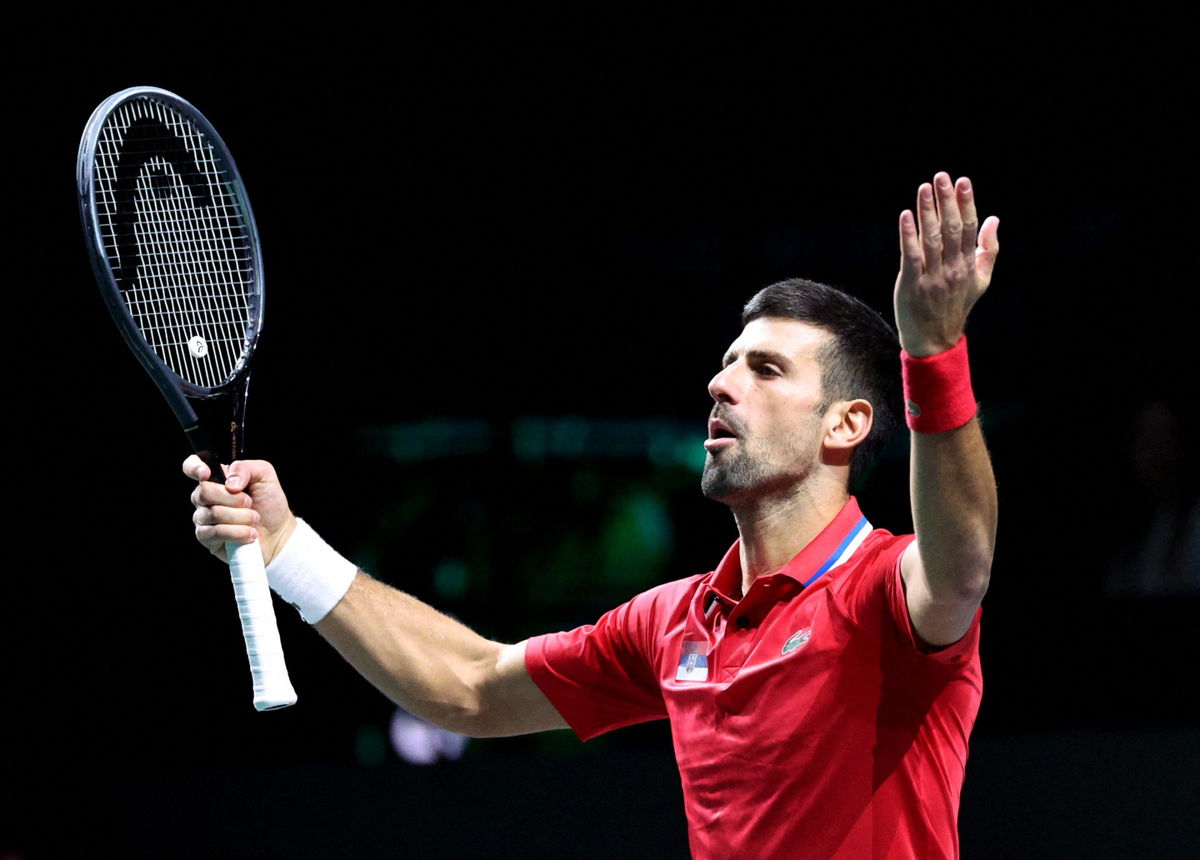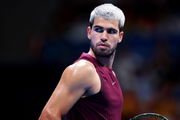
Reuters
Tennis – Davis Cup Finals – Semi Final – Serbia v Italy – Palacio de deportes Martin Carpena, Malaga, Spain – November 25, 2023 Serbia’s Novak Djokovic reacts during his doubles match with Miomir Kecmanovic against Italy’s Lorenzo Sonego and Jannik Sinner REUTERS/Violeta Santos Moura

Reuters
Tennis – Davis Cup Finals – Semi Final – Serbia v Italy – Palacio de deportes Martin Carpena, Malaga, Spain – November 25, 2023 Serbia’s Novak Djokovic reacts during his doubles match with Miomir Kecmanovic against Italy’s Lorenzo Sonego and Jannik Sinner REUTERS/Violeta Santos Moura
In the loudness of grunts and cheers that surround professional tennis, there exists a silent but explosive crescendo as well. A common phenomenon that is being highlighted these days is breaking racquets by athletes. World’s No.1 Novak Djokovic has become synonymous not just with flawless backhands but also with the occasional eruption of his racquet rage. In a recent turn of events, star coach Patrick Mouratoglou laid bare his true thoughts about this.
Watch What’s Trending Now!
In a sport like tennis, precision and passion are at the top. So, what does it truly signify when these athletes unleash their frustration on their trusted equipment? Mouratoglou’s detailed statement provides a sneak peek at the mindset of champion athletes.
ADVERTISEMENT
Patrick Mouratoglou decodes the racquet rage of Novak Djokovic
The spotlight often fixates not only on a player’s exceptional shots but also on the emotional outbursts that occasionally punctuate the game. Among these moments, the breaking of racquets has become a subject of fascination and critique. The discussion over this gets serious particularly when it comes to the world’s top-ranked player, Djokovic. Interestingly, Mouratoglou also put his former student, Serena Williams in the same light as Djokovic.
View this post on Instagram
Amid the disapproval from critics and the staunch defense of his fans, Mouratoglou recently offered a nuanced perspective on Djokovic’s racquet-breaking episodes. Contrary to the common perception associating such actions with mental weakness, Mouratoglou offered a fresh way to look at these things. In his words: “When a player breaks a racquet, it doesn’t mean that he’s weak mentally.”
ADVERTISEMENT
The coach offers a lesser-seen side of the racquet-breaking narrative. He continues, “Novak is a good example. It doesn’t mean he’s giving up at all. And usually when he breaks the racquet, he plays better after.” Mouratoglou seems quite convinced about his idea. According to Mouratoglou, Williams was on a similar track. He said: “Serena was doing that also in the past.” He goes on to reaffirm: “So, I would say that in two cases out of three, breaking the racquet is not mental weakness but it brings mental strength.”
Top Stories
Rafael Nadal Returns to Tour With a Surprising Twist for Rising Stars

Iga Swiatek Opens Up About Financial Struggles and ‘Stressful’ Conditions During Her Childhood

Carlos Alcaraz’s Split With Coach Resulted From ‘Major Disagreements’ With His Father

Nick Kyrgios Confirms His Return to Professional Tour

Learner Tien Achieves Rare Feat After Defeating World No. 167 in Jeddah

ADVERTISEMENT
Mouratoglou explains that for Djokovic, it becomes a channel for releasing built-up anger, which then turns into a positive force that propels him to elevate his performance in subsequent points and games. As per him: “And when he breaks the racquet, he needs to take his anger out or he needs to recruit within himself, anger. But a positive anger that’s going to make him improve his level of play in the next points and games.” But is this enough to put an end to the criticism that Djokovic receives?
Djokovic and the criticism that surrounds him
Djokovic not only wields his racket with precision but also navigates the storm of criticism that follows his every move. Beyond the court, the echoes of disapproval regarding his occasional racquet rage goes louder than for any athlete of his stature.
ADVERTISEMENT
Critics often sharpen their pens, questioning not just his gameplay but his attitude and perceived arrogance. In the relentless scrutiny that Djokovic faces, every racquet-break becomes a magnifying glass. It especially focuses not only on the act itself but on the broader narrative surrounding his on-court demeanor.
Is this scrutiny actually warranted, or does it overshadow the nuanced reasons behind his unique approach to channeling frustration? What are your thoughts on this? Let us know in the comments.
WATCH THIS STORY: ‘Why Is His Brother Taking a Video..Sweet Home Alabama?’ – Tennis Fans React Hilariously to Unearthed Novak Djokovic Underwear Photo
ADVERTISEMENT
ADVERTISEMENT
ADVERTISEMENT
ADVERTISEMENT

